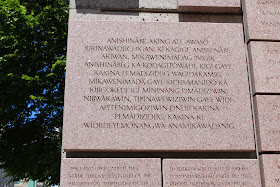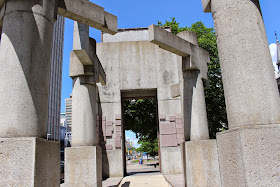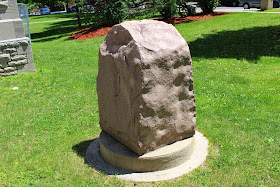Dorothy O'Connell is an activist, author, playwright, wife, mother of five children, friend and poet laureate of the poor. The
monument that bears her name honours her anti-poverty work, and focuses attention on the issue of ending poverty. The image is a slice of bread with a house removed from it. The removed piece forms a podium and bears the title of the monument, eloquently symbolizing the hard choices poverty imposes on people. The monument is located on Ottawa City Hall grounds on Lisgar near Elgin.
 |
Avec
la pauvreté
pas d'égalité
L'égalité
met fin à
la pauvreté
D. O'Connell |
 |
Poverty
stops
equality
Equality
stops
poverty
D. O'Connell |






















































